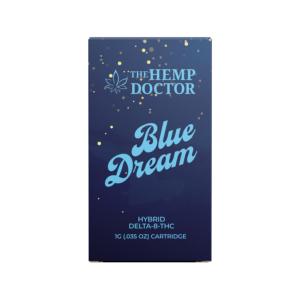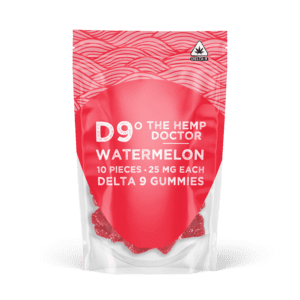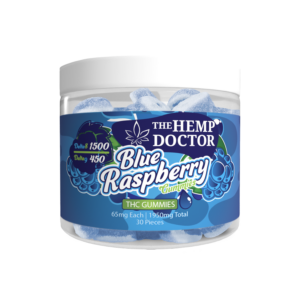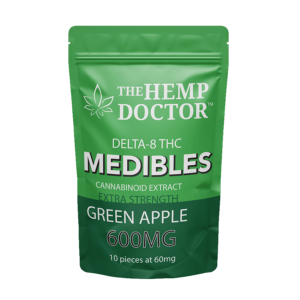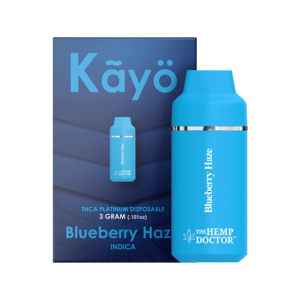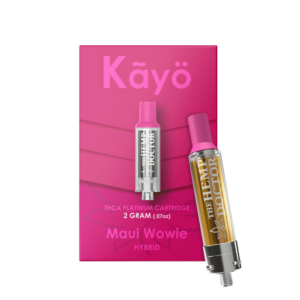Delta 9 is found in both Indica and Sativa strains. There’s no clean-cut way to associate Delta 9 with one type. That’s because Delta 9 itself is simply a chemical component of cannabis; it’s not a compound exclusive to sativa or indica varieties.
While Delta 9 largely contributes to the high felt in smoking cannabis, it’s not the only factor that determines the entirety of your experience. The average percentages of other cannabinoids and terpenes unique to a particular strain also take part.
If you’ve found yourself asking, “Is delta 9 indica or sativa?” this blog will clarify where this phenomenal compound actually fits in the sativa/indica puzzle. It will demystify the obsession with these labels and even reveal an unexpected twist: the real secret to finding your perfect cannabis experience might not be in the sativa/indica classification at all.
🔑 Key Takeaways
- Delta 9 isn’t sativa or indica. It’s the “high” ingredient found in both, so don’t let labels fool you.
- Most cannabis today is a hybrid blend, offering both sativa and indica benefits.
- The effects you feel come from the unique mix of cannabinoids and terpenes, not just whether it’s called sativa or indica.
What Is Delta 9 THC?
Delta 9 tetrahydrocannabinol (Delta 9 THC) is the primary psychoactive compound in cannabis plants. It’s the compound behind the famous cannabis “high.” Delta 9 isn’t the only type of THC out there; there’s also Delta 8 and Delta 10, but Delta 9 is the most common and the most potent.
Delta 9 THC is present in both sativa and indica strains, as well as in hybrid varieties. However, it is mostly associated with the sativa variety because of its ability to cause a head buzz.
The effects of cannabis Delta 9 THC vary depending on the strain, dosage, and individual. At lower doses, it often produces mild euphoria, while higher doses result in more intense psychoactive effects, such as altered perception.
Delta 9 THC is also found in hemp-derived products, provided they contain no more than 0.3% THC by dry weight, as defined by federal law in the United States. This allows for a wide range of high-quality Delta-9 products to be sold legally in most of the 50 states.
Delta 9 works by binding strongly to the endocannabinoid system through CB1 receptors in your brain. This is what triggers psychoactive effects: feelings of intense pleasure and bliss. In some cases, new users might experience anxiety that wanes as the THC clears from the body.
Delta 9 THC also happens to be the compound that is most likely to make you fail a drug test. This is because it is prohibited at the federal level.
There’s a lot to unpack for this very well-researched molecule; the table below summarizes its characteristics.
Delta 9 THC Features
| Aspect | Details |
|---|---|
| Full Name | Delta 9 Tetrahydrocannabinol |
| Is it Psychoactive? | Yes |
| How it works | Binds to CB1 receptors in the brain, causing euphoria and altered perception. |
| Legal Status | Illegal federally (except if hemp derived with ≤0.3% THC). |
| Where Found | In sativa, indica, and hybrid cannabis plants. |
| Is it Screened for Drug Tests? | Yes, it is commonly tested for in marijuana screenings. |
| Historical Context | Associated with marijuana prohibition and stigma. |
Sativa vs. Indica: What’s the Difference?
To fully understand the difference between the sativa and indica tags, it’s important to go back in history.
The sativa/indica labels started with early botanists trying to sort out different kinds of cannabis. Back in 1753, Carl Linnaeus called all cannabis plants Cannabis sativa because that’s what he knew from Europe. Later, in 1785, Jean-Baptiste Lamarck found a different-looking cannabis in India and named it Cannabis indica after where it came from.
Sativa landraces hail from equatorial zones like Colombia, Mexico, and Thailand, while indica landraces come from cooler, mountainous areas such as Afghanistan, Pakistan, and India.
These pure strains set the foundation for all the hybrids and modern varieties we see today.
Today, these names are still used to describe both how the plant looks and how it makes you feel—sativa for tall plants and uplifting effects, and indica for short, bushy plants and relaxing body effects. But most cannabis you find now is actually a mix of both.
| Characteristics | Original Landrace Sativa Strains | Original Landrace Indica Strains |
| Geography | Tropical, equatorial regions | Cool, mountainous regions |
| Common Strains | Sour Diesel, Jack Herer | Granddaddy Purple, OG Kush |
| Appearance | Tall, thin plants with long internodes and narrow, pale green leaves | Short, bushy plants with broad, deep green leaves |
| Effects | Uplifting, energizing, and mentally stimulating | Relaxing, sedative, and physically calming |
| Best Time to Use | Daytime, mental boost | Nighttime, relaxation, sleep |
| Growing Time | Longer flowering period | Shorter flowering period |
Hybrid Strains: The Sweet Spot Between Indica and Sativa
Today, pure sativa or indica strains are rare. The majority of cannabis on the market is made up of hybrids, strains that combine genetics from both sativa and indica plants.
Hybrid cannabis strains are challenging to classify as purely sativa or indica due to decades of crossbreeding, resulting in strains that blend both sativa and indica traits.
Hybrids can be sativa-dominant, indica-dominant, or balanced, depending on which parent plant’s traits are strongest. This blending of genetics makes it tough to tell a sativa from an indica just by looking or by effects alone.
- Sativa-dominant hybrids: Have more sativa than indica. They tend to be more uplifting and energizing, but with some calming effects.
- Indica-dominant hybrids: Have more indica than sativa. They tend to be more relaxing and sedative, but with a touch of mental clarity.
- Balanced hybrids: They are 50% sativa and 50% indica and hence offer a mix of both worlds. They are ideal for users who want flexibility.
The sativa/indica system is outdated. Hybrids dominate the market, and desired effects are better predicted by a strain’s cannabinoid and terpene profile than by its label.
So, Is Delta 9 Sativa or Indica?
The question “Is delta 9 sativa or indica?” is a common point of confusion. Delta 9 THC is a cannabinoid molecule and is not inherently classified as either sativa or indica. Instead, Delta 9 is found in both sativa and indica cannabis plants, as well as in hybrid strains.
The terms “sativa” and “indica” refer to the subspecies of the cannabis plant, not to the cannabinoid itself.
When you see a cannabis product labeled as “Delta 9 Sativa” or “Delta 9 Indica,” it means the Delta 9 THC has been extracted from a sativa or indica strain, or the product has been formulated to mimic the effects of those strains.
The psychoactive effects of Delta 9 will be influenced by the terpene profile and other cannabinoids present in the product, which can enhance or modulate the overall experience.
Is There a Difference Between Delta 9 from Sativa vs. Indica?
Chemically speaking, Delta-9-THC is the same molecule whether it’s extracted from a Sativa or an Indica strain. Its structure, effects on the endocannabinoid system, and interaction with CB1 receptors remain consistent across both plant types.
However, the user experience can vary dramatically because of the presence of other plant compounds like terpenes, minor cannabinoids, and flavonoids. A synergistic interaction between Delta 9 and other naturally occurring compounds in the cannabis plant, including:
- Terpenes (like myrcene, limonene, or pinene)
- Minor cannabinoids (such as CBG, THCV, or CBC)
- Flavonoids and plant esters
These supporting compounds differ by strain.
Indica strains are typically more sedative and often rich in myrcene and other relaxing terpenes. Sativa strains, on the other hand, might carry more energetic terpenes like limonene or terpinolene, which can contribute to a more uplifting or cerebral experience.
In short, while Delta 9 itself is not exclusive to Sativa or Indica, the way it makes you feel can vary based on the chemical makeup of the strain it comes from. This is why one Delta 9 product might mellow you out, while another could have you buzzing with creative energy even if they contain the same amount of THC.
How to Choose a Delta 9 Product Based on Effects?
When choosing a Delta 9 product, the best place to start is by thinking about what kind of experience you’re after. Are you looking for a boost of energy and focus, or do you want to unwind, relax, or get better sleep?
Choosing Based on Desired Outcome
- Energy and Focus: Opt for sativa-dominant Delta 9 products. These are ideal for daytime use, creative endeavors, and social gatherings. If you have a busy day ahead and want to stay sharp, try a Delta 9 Sativa or a Sativa-dominant hybrid.
- Relaxation and Sleep: Choose indica-dominant Delta 9 products. These are best for unwinding in the evening, managing stress, and promoting restful sleep.
- Balanced Effects: Hybrid Delta 9 products offer a mix of sativa and indica effects, suitable for those who want a balanced experience.Sativa Effects
For complete guidance on choosing Delta 9 products, take note of these tips:
- Know your goal: Energy, focus, relaxation, or sleep—pick a product based on your desired outcome.
- Read the label and descriptions: Product packaging often gives hints about the intended effects.
- Check third-party lab reports: These show exactly what’s in the product, so you know you’re getting Delta 9 (and not something else) and can see if other cannabinoids or terpenes are present.
- Don’t rely only on “sativa” or “indica” labels: Most modern cannabis is hybridized, so focus on the actual effects and lab results.
Can You Buy Delta 9 THC Wholesale?
Yes, you can buy Delta 9 THC products wholesale, provided you comply with local and federal laws. Reputable suppliers offer a wide range of Delta 9 edibles, vapes, and other products in bulk for retailers, dispensaries, and wellness shops. Hemp-derived Delta 9 THC (with ≤0.3% THC by dry weight) is legal at the federal level in the United States, but always check your state regulations before purchasing.
Some of the advantages of buying Delta 9 THC wholesale include:
- Cost Savings: Wholesale pricing allows you to purchase products at a lower cost per unit.
- Product Variety: Access to a broad selection of products (gummies, vapes, chocolates, etc.) tailored to your customers’ needs.
- Consistent Supply: Buying in bulk ensures you have a steady inventory to meet demand.
- Brand Growth: Wholesale partnerships can help you expand your product offerings and build customer loyalty.
Look for the following hallmarks when buying Delta 9 THC wholesale:
- Lab Testing: Always choose suppliers that provide third-party lab reports verifying potency, purity, and safety.
- Compliance: Ensure products meet federal (≤0.3% THC by dry weight) and state legal requirements.
- Reputation: Work with established, reputable wholesalers with positive reviews and transparent business practices.
- Product Variety: Look for a diverse product lineup to cater to different customer preferences.
- Customer Support: Reliable wholesalers offer responsive customer service and clear communication regarding orders, shipping, and returns.
Always review lab results and product descriptions to ensure you’re getting safe, high-quality Delta 9 THC products for your business.
Explore Sativa, Hybrid, and Indica THCA Flowers at The Hemp Doctor Wholesale
No matter the mood, moment, or customer preference, The Hemp Doctor Wholesale has a curated selection of THCA flower to match.
Whether you're stocking up on the energetic buzz of Sativa, the full-body calm of Indica, or the best-of-both-worlds balance of Hybrid strains, our premium, farm-fresh options deliver quality, potency, and purity in every bud.
Explore our full range today and discover why more retailers trust The Hemp Doctor Wholesale for compliant, high-quality THCA flower that sells.
